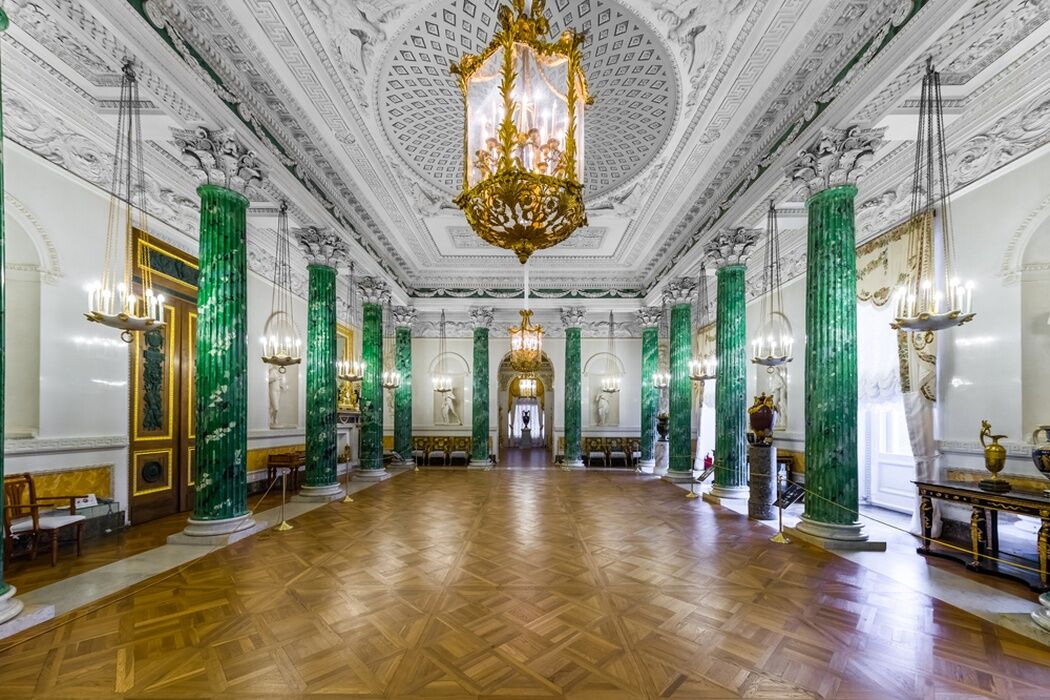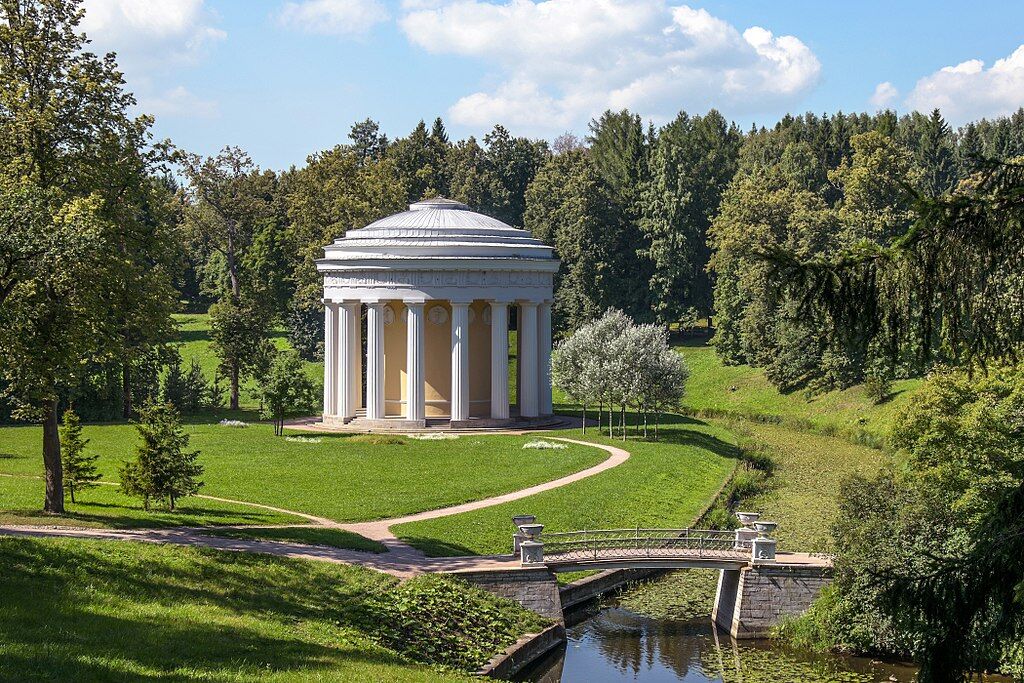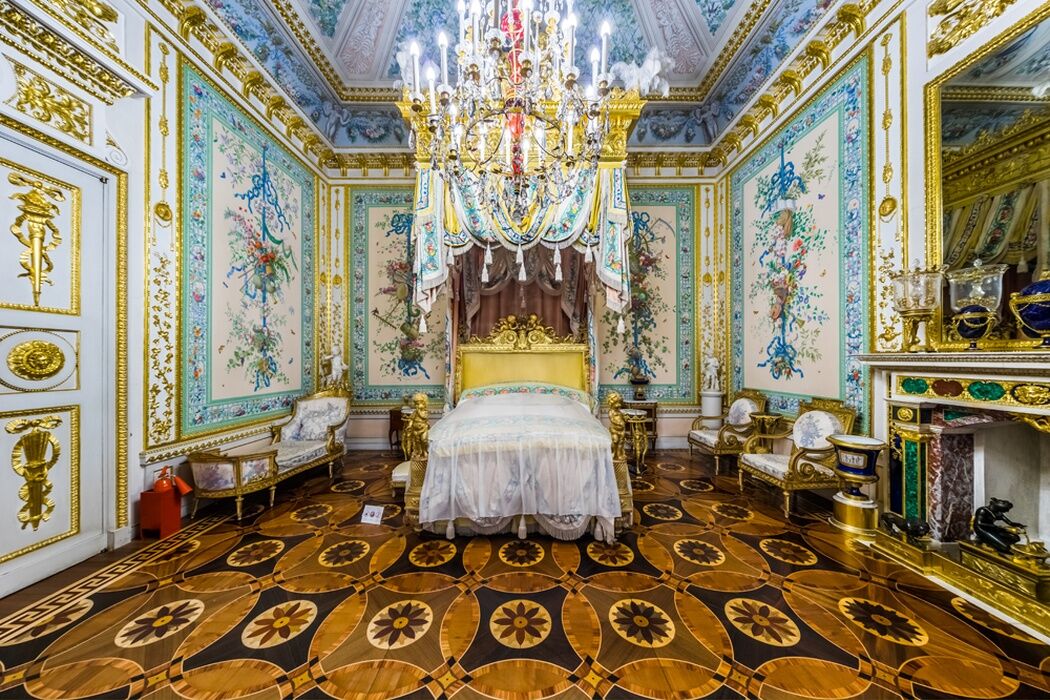The focal point of the Pavlovsk complex is the palace that consists of the main three-story block and two wings linked with it by galleries or passageways. There are over ten pavilions erected in the park which covers the area of 600 hectares. The most notable of there are the Temple of Friendship and The Pavilion of the Three Graces.
Paul I and his wife- Maria put a great deal of effort into turning their family nest into one of Europe’s most beautiful palaces.
Today the palace and park complex of Pavlovsk is a famous museum which boasts rich collections of Russian and Western European art.
Within the walls of their residence they assembled an extensive collection of paintings, porcelain, ornamental metalwork and furniture.
The History of Pavlovsk
In 1777 Empress Catherina II made a gift of the extensive hunting grounds along the banks of the Slavianka River to her son Paul and Grand Duchess Maria Fiodorovna on the occasion of the birth of their first child, the future Emperor Alexander I. Two years later work began on the construction of a formal palace and the landscaping of the natural environs. It was completed in the early 1800s and became the only country estate on the outskirts of Petersburg to have complete stylistic integrity.
The architect Charles Cameron began the creation of the Pavlovsk ensemble with the layout of a park and the erection of small park pavilions. He designed the area with a subtle taste and harmoniously blended architecture with the natural setting. Contemporaries regarded the Pavlovsk Park as the crowning achievement of Russian landscape design.
Pavlovsk became a favorite habitation of Maria Fiodorovna who did her best to improve it until her death in 1828.
The most striking feature of the palace is the semi-circular colonnade, the work of Vincenzio Brenna who took over from Charles Cameron in 1786.
Americans will note the similarity between Pavlovsk and Thomas Jefferson’s buildings, Monticello and the University of Virginia. The likeness is no accident: Jefferson and Cameron used the same model, the Villa Tressino in Italy.
What You will See on Paul’s Palace Tour
- The main entrance to the palace is the Egyptian Vestibule called so after it’s executed in the Egyptian style.
- Beneath the palace’s central cupola is the Italian Hall conceived as a Roman Temple in the manner of the Pantheon.
- The suite of state rooms that led to the Greek Hall, one of the best creations in the history of Russian classicism. Using decorative columns, the architect recreated in this interior an ancient courtyard- peristyle.
- One of the richest interiors of the palace is the Royal Bedchamber. Its decoration with numerous allegories celebrates the theme of pastoral joys widespread in the art of Classicism. In the Empress’s Dressing Room are two toilet sets, one of Sevres porcelain presented to her by the French Queen- Marie Antoinette.
- The Great Throne room (Dining Room) will strike you with its elegance and luxury. Today, the imperial tableware is on display in this room including the famous Gold Dinner Service comprised of over 600 pieces.
- Tsar Paul’s Hall of War and Maria’s Hall of Peace are linked by the magnificent Greek Hall










